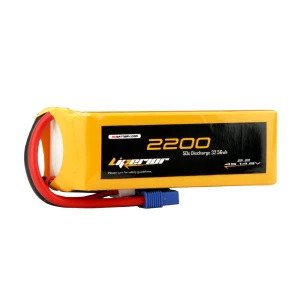In the exhilarating world of RC (remote control) vehicles, the performance of your ride is often limited by one crucial component: the battery. For RC enthusiasts, LiPo (Lithium Polymer) batteries are the gold standard, offering unparalleled power, efficiency, and performance. However, to truly unlock their potential, it’s essential to understand how to optimize and maintain these batteries. This guide will take you through everything you need to know to boost your RC LiPo battery performance, from choosing the right battery to advanced maintenance and troubleshooting tips.
Understanding RC LiPo Batteries
What is a LiPo Battery?
A LiPo battery, short for Lithium Polymer battery, is a type of rechargeable battery that uses a polymer electrolyte instead of a liquid one. This design allows LiPo batteries to be lighter and more flexible compared to traditional battery types like NiMH (Nickel-Metal Hydride) or Li-ion (Lithium-ion).
LiPo batteries are renowned for their high energy density, which means they can store more power in a smaller, lighter package. This is particularly advantageous for RC vehicles, where every ounce of weight matters and battery life is crucial for extended playtime.
Key Terminology
- Voltage (V): The electrical potential difference between the positive and negative terminals of the battery. Common configurations include 2S (7.4V), 3S (11.1V), and 4S (14.8V).
- Capacity (mAh): The measure of how much energy the battery can store, typically expressed in milliampere-hours. A higher capacity means longer run times.
- C-Rating: Indicates the discharge rate of the battery, or how quickly it can deliver power. Higher C-Ratings are ideal for high-performance applications.
Common Types of RC LiPo Batteries
- 2S LiPo Batteries: Offer a voltage of 7.4V and are suitable for entry-level and intermediate RC vehicles.
- 3S LiPo Batteries: Provide 11.1V, offering increased power and are used in more advanced RC models.
- 4S LiPo Batteries: Deliver 14.8V, ideal for high-performance and racing RC vehicles.
Why LiPo Batteries Are Ideal for RC Vehicles
High Energy Density
LiPo batteries pack a significant amount of energy into a compact and lightweight package. This translates to longer run times and better performance without adding excessive weight to your RC vehicle.
Lightweight and Compact
The polymer electrolyte used in LiPo batteries allows for flexible designs. This makes them ideal for RC vehicles where space and weight are at a premium.
High Discharge Rates
LiPo batteries can deliver power quickly and efficiently, thanks to their high C-Rating. This ensures that your RC vehicle can handle high-speed runs and demanding maneuvers.
Longer Run Times
The combination of high capacity and efficient power delivery means that LiPo batteries can keep your RC vehicle running longer compared to other battery types.
Boosting Your RC LiPo Battery Performance
Choosing the Right Battery
To maximize your RC vehicle’s performance, it’s crucial to select a LiPo battery that matches its specifications. Consider the following factors:
- Voltage Compatibility: Ensure the battery’s voltage matches your RC vehicle’s requirements. Using a higher voltage battery may increase performance but could also damage your electronics if not compatible.
- Capacity Needs: Choose a battery with sufficient capacity for your desired run time. Higher mAh ratings provide longer playtime but may add weight.
- C-Rating: Match the battery’s C-Rating to your RC vehicle’s power demands. Higher C-Ratings are necessary for high-speed or high-torque applications.
Battery Maintenance Tips
- Proper Charging Techniques: Use a LiPo-specific charger and always balance charge your batteries. Balancing ensures that all cells within the battery maintain the same voltage level, which is crucial for battery health and performance.
- Storage Recommendations: Store LiPo batteries at a voltage of around 3.7V per cell to prevent over-discharge. Keep them in a cool, dry place and avoid exposing them to extreme temperatures.
- Handling and Safety Precautions: Always handle LiPo batteries carefully. Avoid puncturing or short-circuiting them, and use a fireproof LiPo bag during charging and storage.
Upgrading Your Battery Setup
- Enhancing Capacity and Voltage: Consider upgrading to a higher capacity or voltage battery if you want more power or extended run times. Ensure your RC vehicle’s electronics can handle the increased power.
- Adding External Cooling Systems: To prevent overheating, install cooling fans or heat sinks. This is particularly important during high-performance runs.
- Using High-Performance Connectors: Upgrade to high-quality connectors and wiring to reduce power loss and improve efficiency.
Performance Enhancements and Tuning
Tuning Your RC Vehicle for LiPo Batteries
- Adjusting ESC Settings: Your ESC (Electronic Speed Controller) may need recalibration to handle the increased power from a LiPo battery. Check the manufacturer’s recommendations for optimal settings.
- Modifying Gear Ratios: Adjusting your vehicle’s gear ratios can improve performance and efficiency, especially when upgrading to a higher voltage battery.
Battery Tuning Techniques
- Breaking in New Batteries: Before using a new LiPo battery, run it through a few charge-discharge cycles at a lower discharge rate. This helps to balance the cells and optimize performance.
- Balancing and Monitoring Cell Voltages: Regularly check and balance the cell voltages to ensure even power distribution and prevent damage.
Common Upgrades
- Aftermarket Battery Packs: Explore high-performance aftermarket battery packs designed for your specific RC model to achieve superior performance.
- Performance-Oriented Charging Systems: Invest in advanced charging systems with features like fast charging and detailed monitoring to keep your batteries in top condition.
Troubleshooting Common Issues
Battery Drain Issues
- Identifying Weak Batteries: Symptoms of a weak battery include reduced run time, inconsistent power delivery, or physical swelling. Replace batteries that show signs of significant wear or damage.
- Solutions for Battery Drain Problems: Check for proper charging and storage practices. If problems persist, consider using a battery analyzer to diagnose issues.
Overheating Concerns
- Causes and Preventive Measures: Overheating can result from excessive power draw or inadequate cooling. Ensure your battery and vehicle are well-ventilated and avoid high-stress operations without proper cooling.
Maintaining Battery Health
- Best Practices for Prolonging Battery Life: Regularly inspect and maintain your LiPo batteries. Avoid deep discharges, overcharging, and exposure to extreme conditions.
Safety Considerations
Proper Charging Practices
Always use a charger designed for LiPo batteries, follow manufacturer guidelines, and never leave charging batteries unattended.
Safe Storage Techniques
Store LiPo batteries in a fireproof bag or container, away from flammable materials and in a cool, dry location.
Handling Battery Failures
If a LiPo battery shows signs of swelling, leakage, or other damage, discontinue use immediately and follow proper disposal procedures.
Case Studies and Examples
Success Stories of Enhanced RC Performance
Many RC enthusiasts have reported dramatic improvements in performance and run times after upgrading their battery setups. For example, transitioning from a standard NiMH battery to a high-capacity 3S LiPo battery resulted in significant speed increases and longer play periods.
Before and After Comparisons
Before upgrading, users might experience shorter run times and less responsive handling. After implementing LiPo battery upgrades and tuning, they often report enhanced speed, power, and overall driving experience.
Frequently Asked Questions (FAQs)
What are the benefits of using LiPo batteries in RC vehicles?
LiPo batteries offer high energy density, lightweight construction, high discharge rates, and longer run times, making them ideal for RC vehicles.
How often should I balance charge my LiPo batteries?
Balance charge your LiPo batteries each time you charge them to ensure all cells maintain the same voltage and maximize battery life.
What is the recommended storage voltage for LiPo batteries?
Store LiPo batteries at a voltage of around 3.7V per cell to prevent over-discharge and maintain battery health.
Can I use a higher voltage LiPo battery in my existing RC setup?
You can use a higher voltage battery, but ensure that your RC vehicle’s electronics and ESC can handle the increased power to avoid damage.
What should I do if my LiPo battery swells or gets damaged?
Discontinue use immediately, store the battery in a fireproof container, and follow local regulations for proper disposal of damaged LiPo batteries.
Conclusion
Maximizing the performance of your RC vehicle begins with understanding and optimizing your LiPo battery setup. By selecting the right battery, adhering to proper maintenance practices, and tuning your setup, you can significantly enhance your ride’s power and efficiency. Embrace these strategies to energize your RC experience and enjoy longer, more exhilarating runs.




